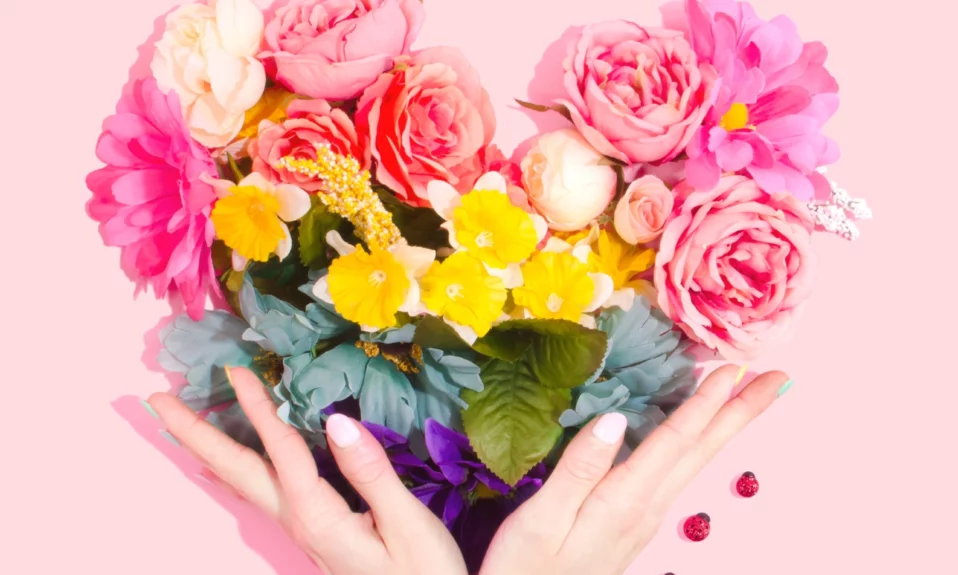
With this in-depth guide, you can Create and Choose Brand Colors Easily!
The ultimate guide to choosing the right colors for your brand. Learn all you need to know for choosing the right colors for your brand.
Color is one of the most noticeable, tangible components of a brand. It has a huge role in how people perceive and recognize the crowd, and how to memorize your brand. The brand color palette has the potential to attract the right followers, customers, or YouTube video watchers.
Color increases brand recognition by up to 80% 😳 If you’ve done your brand color palette right, you’ve completed 50% of your brand visual identity!
Color is at the core of every brand. It evokes emotions and communicates a message. Your brand color palette has the potential to attract the right followers, customers, or YouTube video watchers. A good brand color palette also affects the value of your business and makes it more memorable. To create an effective brand color palette, you first need to understand how different colors can be perceived in relation to your brand or industry.
Finding the right brand color palette is a known challenge for most founders, entrepreneurs, marketers, and designers.
If you’re a startup or launching a new business, then you’re likely also going to have to choose your brand colors. Besides that, you’ll need to create a logo, website, and a lot of other visual components for your brand. And this actually can get overwhelming. With so many possible colors and options, how do we choose them? What do we even pay attention to in order to make this decision? This article is going to help you with the answer — a guide on how to choose the best brand colors for your company or project.
- How many colors should be in a brand palette?
- What is Brand Color?
- Color Inspiration for Brands
- Establish your brand identity
- Color Psychology for Brands
- Color Harmonies for Brands
- Test Your Color Interactions
- Create the Tints, Tones, and Shades of your Brand Colors
- Check your Colors Contrast
- Keep culture in mind when choosing colors
- Keep your brand color codes in one place
How many colors should be in a brand palette?
You can pick one or two colors for your brand but never pick more than 4 main colors for your brand.
To land your brand color palette perfectly you need to know some basics of colors:
- The color psychology and emotions they evoke
- Tints, Tones, and Shades of colors
- Primary, secondary, accent, and neutral colors
- Color harmonies and color wheel
- The transition between colors (To create stunning gradients)
- Color blindness and contrast (To ensure everyone can see and read with your colors)
- Interaction between colors (To make sure your colors work well together)
- Color models and systems like RGB, CMYK, HSB, and more…
The great news is that we have color tools for each and every challenge you may face to pick your brand palette.
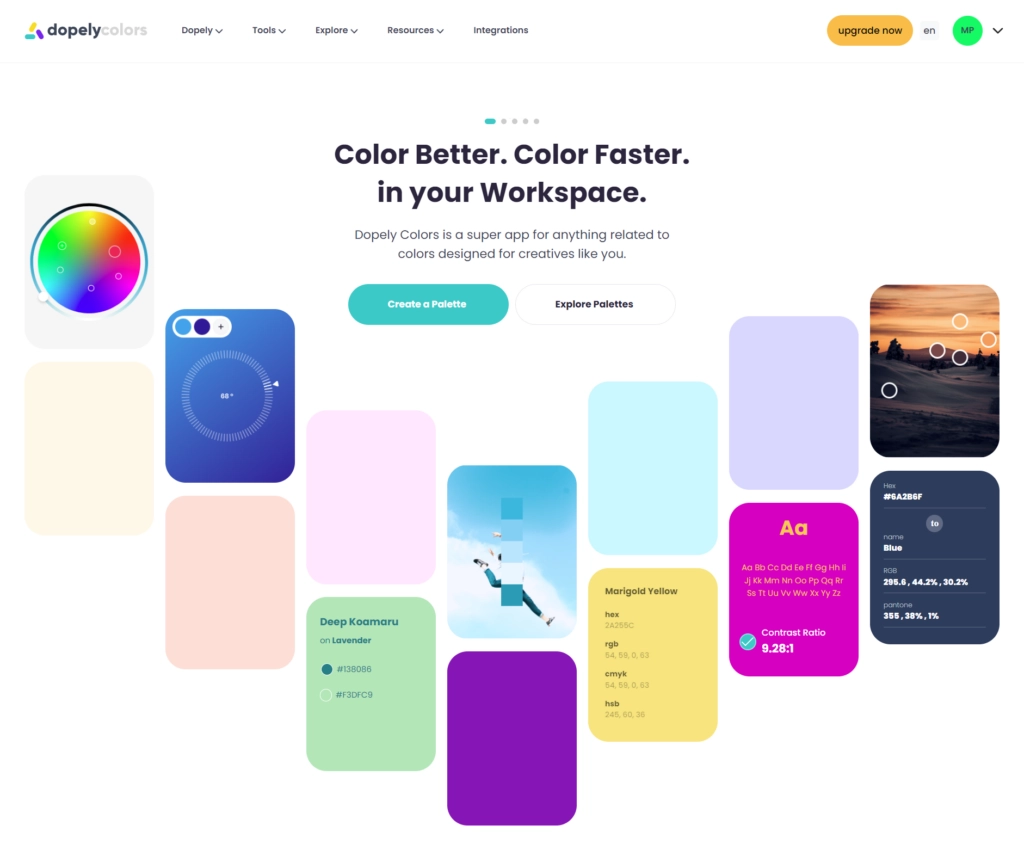
What is Brand Color?
A brand identity color palette is a set of colors specifically chosen to represent your brand and is one of the main pillars of your brand image.
Brand colors are a palette of 1 to 6 colors used to represent a particular company. Consistent and strategic application of brand colors can increase brand recognition and awareness.
Primary uses for brand colors include company logos, website color schemes, social media channels, business card design, and print and digital advertising. Businesses in good working order can also apply brand colors to store design, employee uniforms, product packaging, and more.
Color Inspiration for Brands
Get inspired to choose a brand color.
Before jumping to pick your brand color based on psychology and your brand attributes, You have to find colors and color palettes you like the most and create a color mood board. A color moldboard helps you to navigate between different color combinations and opens up your mind to new color palette ideas.
Head over to Dopely’s Color Palette Finder and navigate through all color palettes and save or export those you love the most. You can select single colors from color explore and create your brand palette ideas from the ground up.

Also, you can find famous brand colors palettes of top companies and startups such as Instagram Palette, Amazon Colors, Pepsi Color Palette, and McDonald’s Colors

Go ahead and spent a few good hours finding amazing colors and color palettes for your brand visual identity.
Establish your brand identity
Brand colors reflect the brand’s personality. So, your color palette should match your values and the message you want to convey.
To do this, you must first define your brand identity. A recommended way to do this is to create a list of adjectives that describe the characteristics of your company as if you were talking about people. Ask yourself how you want your brand to be perceived and what sets it apart from the competition. The following range of brand identity attributes are key to brand building and can help you more easily identify the core of your brand.
You can use the Business Hub to define and establish your brand strategy and identity as well as other areas of your business.

Color Psychology for Brands
Choose brand colors with color psychology in mind.
Now that you have inspired yourself with tons of good-looking color palettes and blessed your eyes, It’s time to dig into color psychology and see which colors associate with your brand attributes better.
Color is a powerful communication tool and is often used by designers to encourage action, influence mood, and play with emotion.
It’s a tool that allows your audience to see what you want to see, feel what you want to feel, and do what you want.
In fact, studies show that 60% of people decide if they like a message based on color alone. The way you use color also affects brand awareness and increases brand awareness by up to 80%.
You need to have a basic understanding of color psychology if you want to create a color palette that will appeal to your ideal audience and accurately represent your brand.
So, before starting the steps below, take a look at these common color associations. (You probably already know a lot subconsciously!)
We’ve already written a few contents on this topic, read them to gain deeper color psychology insights.
- Google’s Logo and Psychology of Its Colors
- Why Do People Prefer Certain Colors
- Color Wheel: The Most Complete Guide on Color Theory
I’m going to write a full and in-depth article about color psychology and its theories, but to start, let me share some small bites about the psychology of colors to help you choose your brand colors. Choosing Brand Colors with psychology in mind.
Blue Psychology for brands
Blue is perceived as trustworthy, loyal, trustworthy, and serene. It is a color popular with financial institutions (IBM, Citibank, Bank of America, Chase) and SNS (Facebook, Twitter, LinkedIn) as a message of stability and trust. Blue is also popular for promoting products related to cleanliness (water purifiers, detergents), air and sky (airlines, air conditioners), and water and sea (cruise routes, bottled water). This color is said to suppress appetite and is generally avoided in restaurant logos and food packaging. Studies have shown that blue is the preferred color for men.
Authority, serenity, confidence, dignity, loyalty, success, safety, tranquility, and reliability are commonly associated with blue.
If your brand is in banking, b2b, cleanness, or water or you want to convey loyalty, success, dignity, authority, and confidence then the blue color family could be your main and primary color to choose for your brand.


Green Psychology for brands
Green is the color of nature. It symbolizes growth, freshness, serenity, and healing. There is also a strong emotional connection with security and balance. Dark green is closely associated with money, banking, and wealth, while bright green has a calming effect.
Common associations associated with green include freshness, harmony, health, sustainability, healing, inexperience, money, and nature.
If your brand is in healing, money, nature, and health, then you can consider green color for your brand as a primary or secondary color.

Yellow Psychology for brands
Yellow is the color of positivity, happiness, and warmth. This color draws attention (which explains why taxis are yellow) and can also indicate caution (yield at signs and traffic lights). Men usually perceive yellow as a very free-spirited and childish color, so it is rarely seen in advertisements for high-end products at car companies or menswear stores. Yellow is also considered spontaneous and unstable.
Common associations associated with yellow include caution, cheerfulness, cowardice, curiosity, happiness, joy, playfulness, positivity, sunshine, and warmth.


Orange Psychology for brands
Orange is less intense than red but still has more impact. Lively and warm. Like yellow, orange is associated with joy, sunshine, and playfulness. It is often used in logos to stimulate emotion or appetite.
Some common associations associated with oranges include creativity, enthusiasm, lightheartedness, accessibility, and youthfulness.
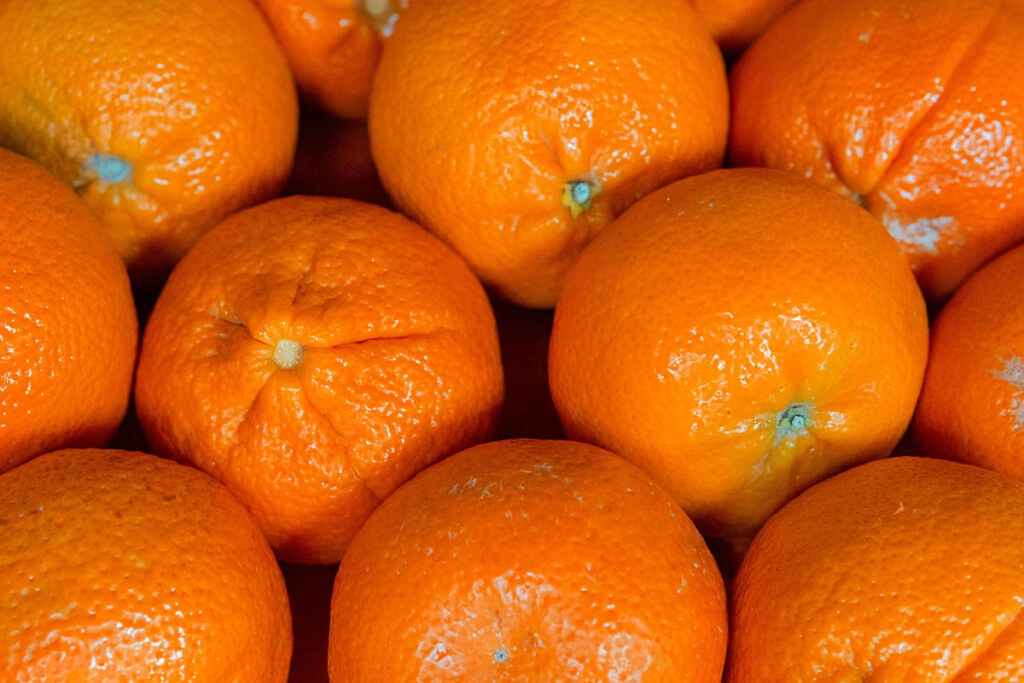
Red Psychology for brands
Red is the color of fire and blood, so it is often associated with energy, war, danger, and power, as well as passion, lust, and love. Emotionally charged colors are often used to stand out and grab the attention of viewers (red tag sale and buy now buttons). Red is also known to increase blood pressure and stimulate appetite, so it is often used by food industry brands including Nabisco, Kellogg’s, Frito-Lay, Heinz, McDonald’s, and Chick-fil-A.
Red is often associated with action, adventure, aggression, blood, danger, drive, energy, excitement, love, passion, and strength.


Pink Psychology for brands
Pink is a feminine color that evokes innocence and tenderness. But bright, vibrant shades of pink often evoke a bold, modern appeal. In general, pink is known for being kind and calming.
Common associations associated with pink include gratitude, romance, tenderness, innocence, gentleness, and gratitude.


Purple Psychology for brands
Purple is closely associated with royalty, nobility, extravagance, and extravagance. It is a very rare color in nature and many people associate it with creativity and mystery. It also evokes nostalgia.
Some common associations with purple include fantasy, mystery, nobility, royalty, and sophistication.


Brown Psychology for brands
Brown represents nature and practicality and is often used in architectural and law-related logos due to its simplicity, warmth, and neutrality.
Common associations of brown include depth, earthiness, coarseness, richness, simplicity, seriousness, sophistication, and usefulness.


White Psychology for brands
Psychology of white color
Some consumers find white clean, modern, and safe. However, depending on your business, this may be too cold and sterile for your brand.
White often symbolizes innocence, innocence, and safety in Western culture. (For example, American brides typically wear white to denote pre-wedding innocence.) The color can also represent neutrality or space. In effect, white creates “breathing space” between two or more elements. In recent years, we’ve seen tech, art, and fashion brands keep their designs clean and simple with white logos.
If you’re using white, if you have a modern and exciting business like a startup or tech company, this color is perfect for your brand. Using white for visual elements can also act like a blank slate and stimulate creativity. Art studio owners can think of white branding as a blank canvas! White is also a suitable color for store owners who want to create contrast between the aisles and shelves.


If your brand has a strong personality, using white as your primary brand color can limit your design.
This doesn’t mean you should avoid white entirely. Just use it sparingly. Also keep in mind that white can cause coldness, emptiness, or infertility. If you’re aiming for an energetic or upbeat brand, consider avoiding white and trying warm colors.
Some of the brands that use white as their main brand colors:
- Apple
- HGTV
- Sony
- Zara
Black Psychology for brands
Black represents strength, elegance, and authority. It is often associated with intelligence, but also with evil and sadness. It is a serious color that evokes strong emotions.
Common associations with blacks are power, class, distinction, formality, mystery, secrecy, seriousness, elegance, and tradition.


Color Harmonies for Brands
How to Choose Brand Colors Using Color Theory
Once you learned the basics of brand color psychology, it’s time to gain some knowledge about color harmony and how to use the colors wheel.
Choosing the right brand colors can be a challenging and tedious task, so I’ve prepared a list of 20 color palettes to help you out. You’ll find a variety of vibrant and creative brand color palettes, suitable for different business types. Whether you’re starting a new business or want to change the colors of your existing one, trying different color combinations can be very helpful. Instead of spending hours looking through color schemes, let’s dive right into the solutions!
Let’s recap color psychologies quickly:
- Red: action, strength, energy, and passion
- Orange: emotion, youth, optimism, and enthusiasm
- Yellow: happiness, optimism, positivity, and intellect
- Green: harmony, safety, growth, and health
- Blue: security, trust, loyalty, and responsibility
- Purple: spirituality, mystery, royalty, and imagination
- Pink: compassion, love, femininity, and playfulness
- Black: protection, power, elegance, and sophistication
- White: cleanliness, purity, innocence, and perfection
- Gray: compromise, neutrality, control, and practicality
- Brown: reliability, stability, honesty, and comfort
- Gold: success, triumph, luxury, and abundance
- Silver: femininity, fluidity, sensitivity, and mystery
The Monochromatic color palette
If you’ve decided to pick one color for your brand, you may need the tint of your main brand color to work as your pair each other. Monochromatic color palettes are great for brands that want to get recognized with only one specific color and help their users remember by only looking at their color.
A monochromatic color palette includes many shades and shades of the same color. It’s soft and thin but lacks contrast, which often makes brands look washed out.
You might also consider using a monochromatic color palette if that’s what you’re aiming for. But be careful and use a lot of light and dark tones to create contrast if you go in that direction.
Some examples of the monochromatic brand palette are Blue clues and Facebook.
Here are three monochrome color palette examples:
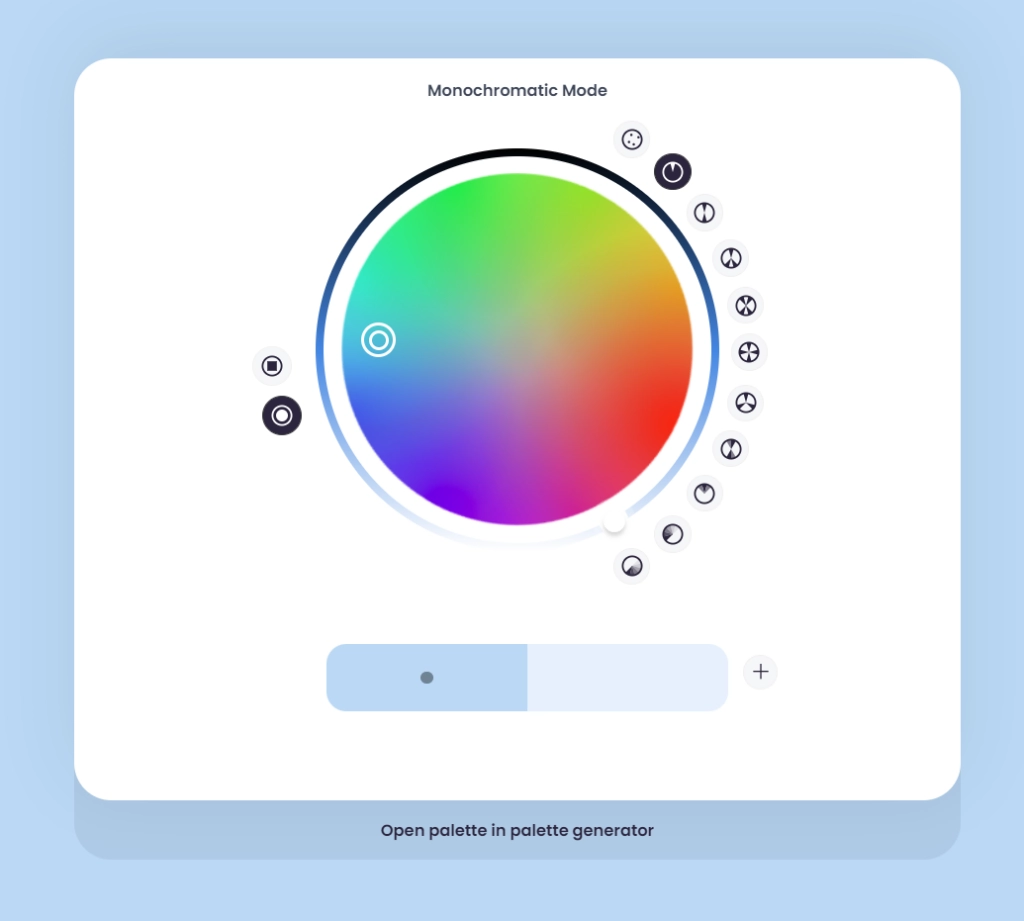

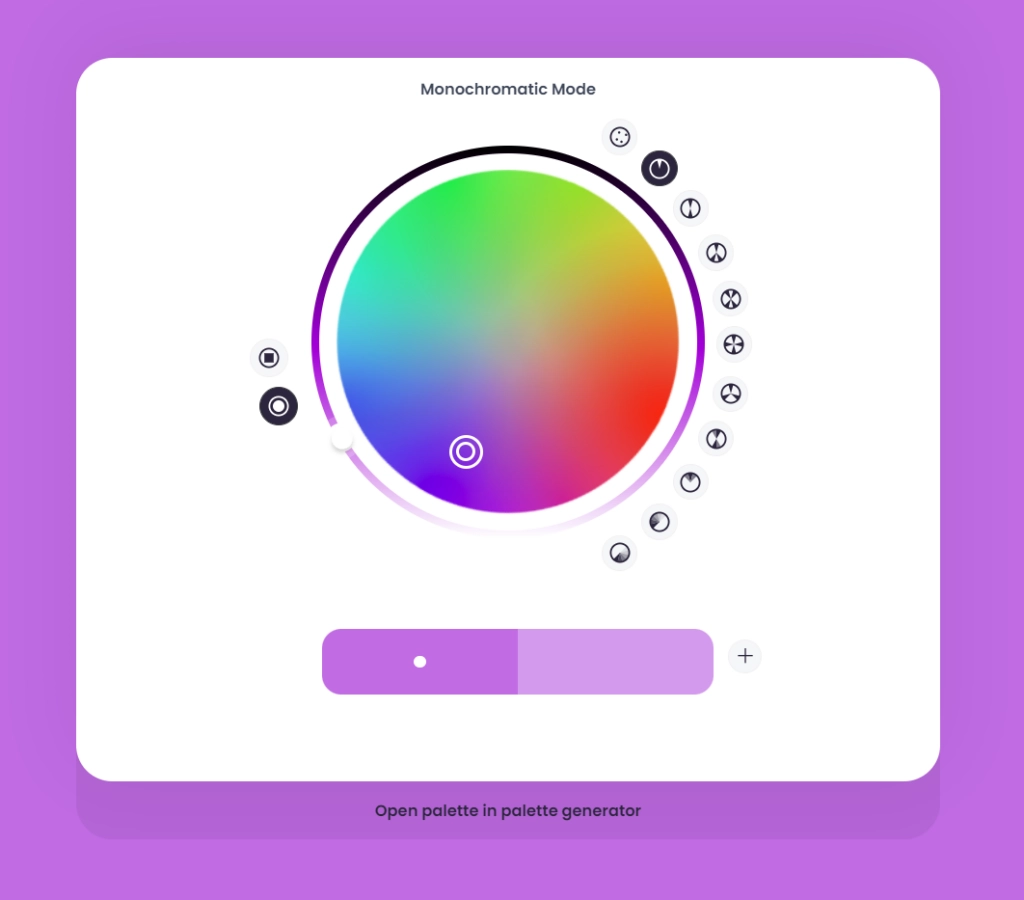
The complementary brand color palette
If you need two colors to use as primary and secondary colors for your brands, then you can consider complementary color harmonies.
One great example of two colors brand palette is the MasterCard brand color palette. Master card colors are not complementary to each other, they picked their colors with the Analogous color harmony wheel. This is another great method to pick brand colors for brands with two or three colors.
Complementary colors are opposite each other on the color wheel, so complementary color palettes often include both warm and cool colors.
Usually, when developing a brand, you want to create a complementary color palette. This type of color combination creates more volume as well as creates balance.
For example, the colors for this brand are from MaeMae & Co. It includes both cool tones (green and mint shades) and warm tones (peach, orange, and pink shades). These complementary colors create volume and interest because they are opposite each other on the color wheel. A shade in one color family is not in another color family and vice versa. They create a nice balance.
Here are three complementary color palette examples:
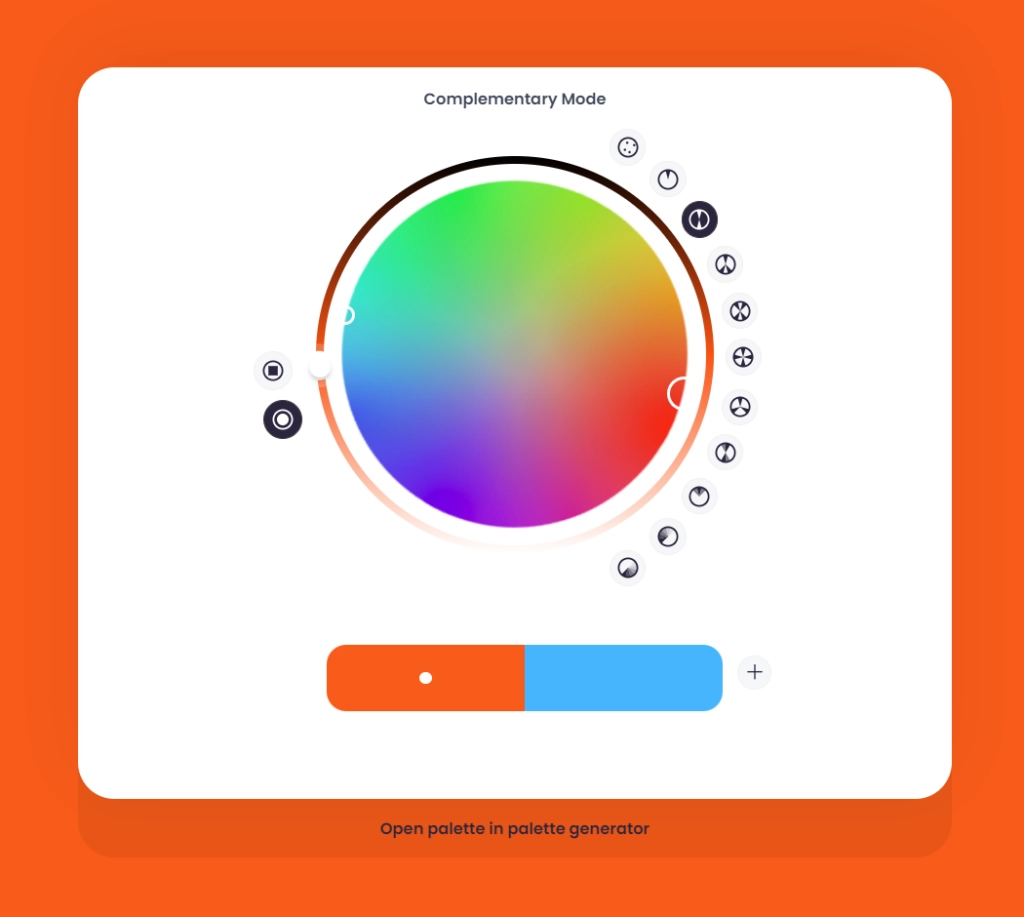

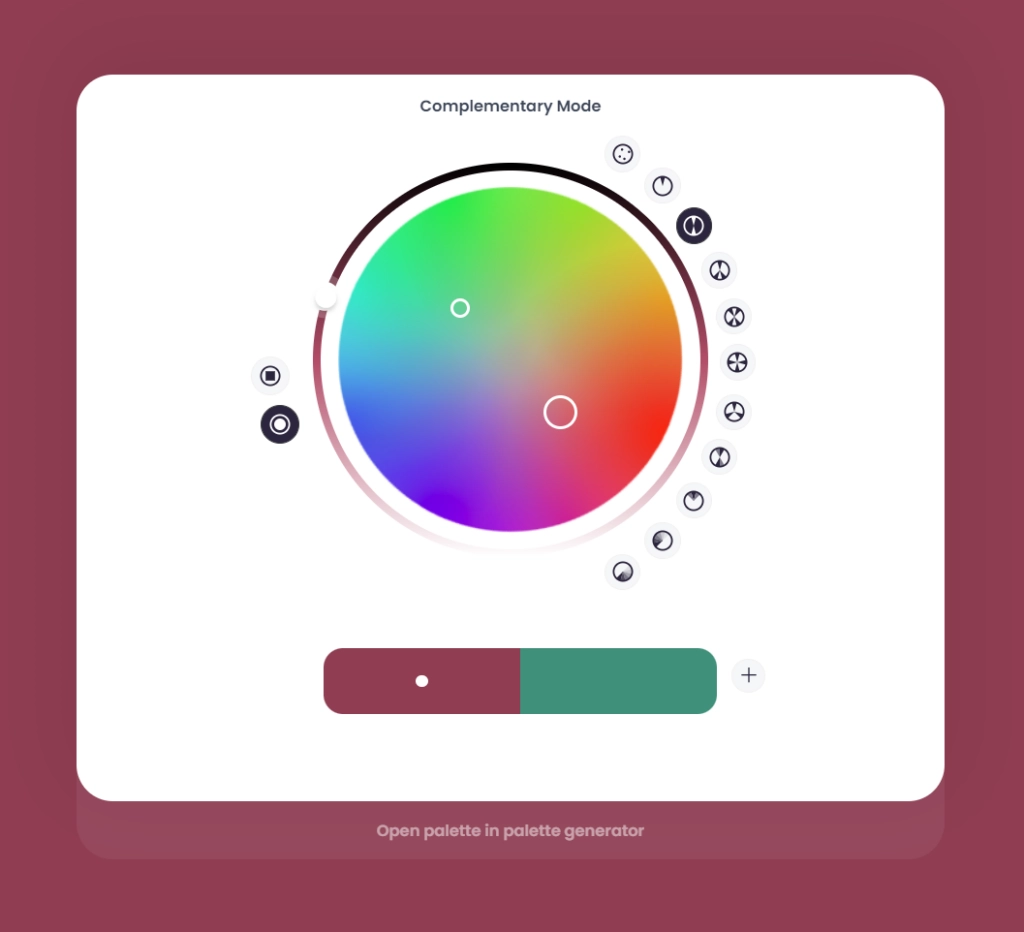
The split complementary brand color palette
If you need two harmonious colors besides one surprising color use it as your third or accent color for your brand, then the Split Complementary method is your go-to method to pick your brand color palette.
Here are three split complementary color palette examples:


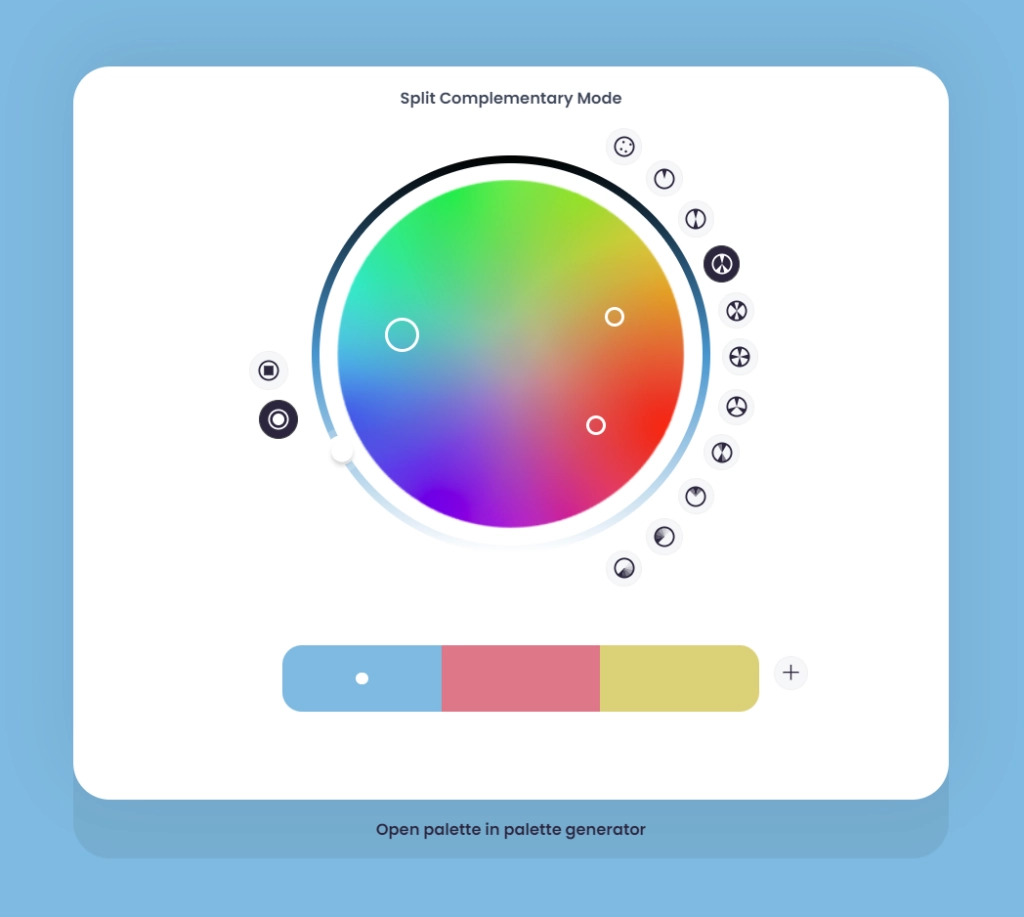
The double complementary model to make brand palettes with
Basically, the only difference between complementary and double complementary models is that the double complementary model gives you the harmonies of your complementary colors… Op’s okay let me explain in another way to make sure you understand what just happened :))
Double complementary gives you the mirrored color harmony of your complimentary. I think I nailed it. :)) let’s continue So I won’t embrace myself…
Here are three double complementary color palette examples:



The Tetradic method for brand colors
If you are looking for vibrant and colorful brand colors to match your brand spirit and attributes like diversity and broad services you should consider using the Tetradic Color Harmony.
Two great examples of brands that used Tetradic color harmony in their brand identity are Microsoft, Google, and Slack.


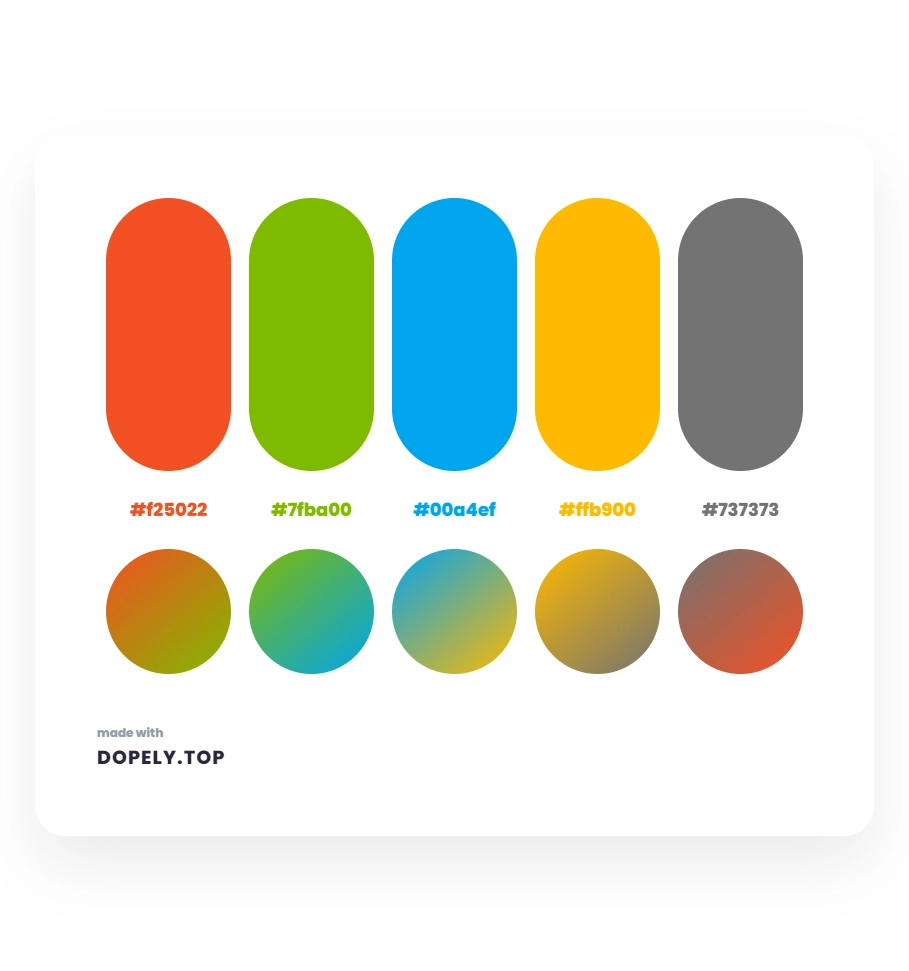
Here are three Tetradic color palette examples:


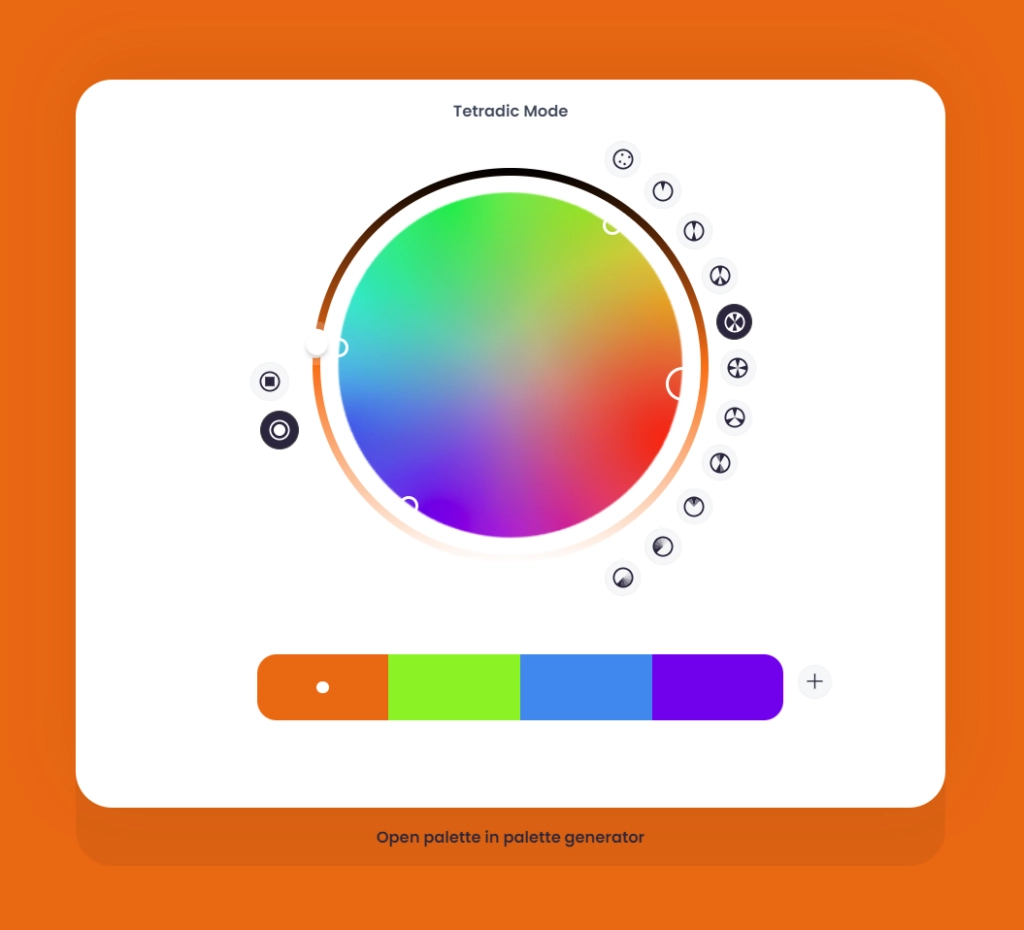
The Square model to pick brand colors
The square color harmony mode or model is similar to triadic with one twist that give you more vivid color palettes that each color has a greater contrast ratio that works better in the interaction of each other.
Here are three square color palette examples:
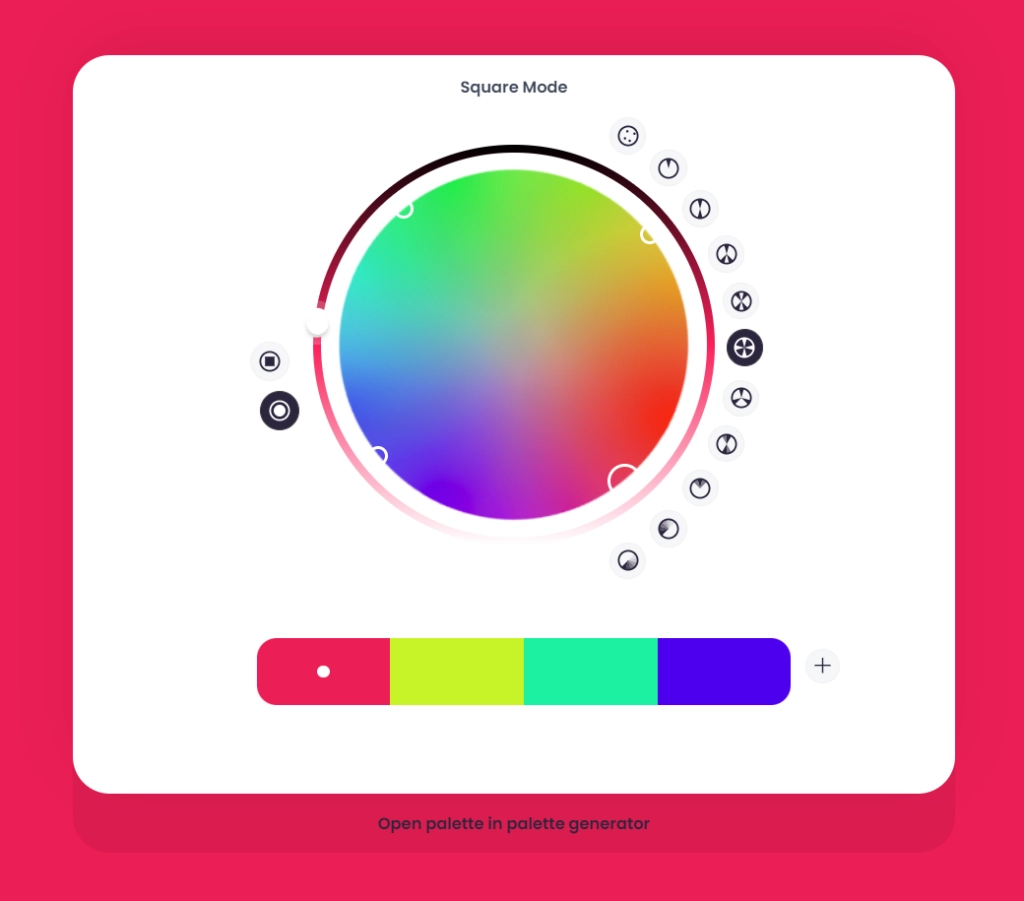
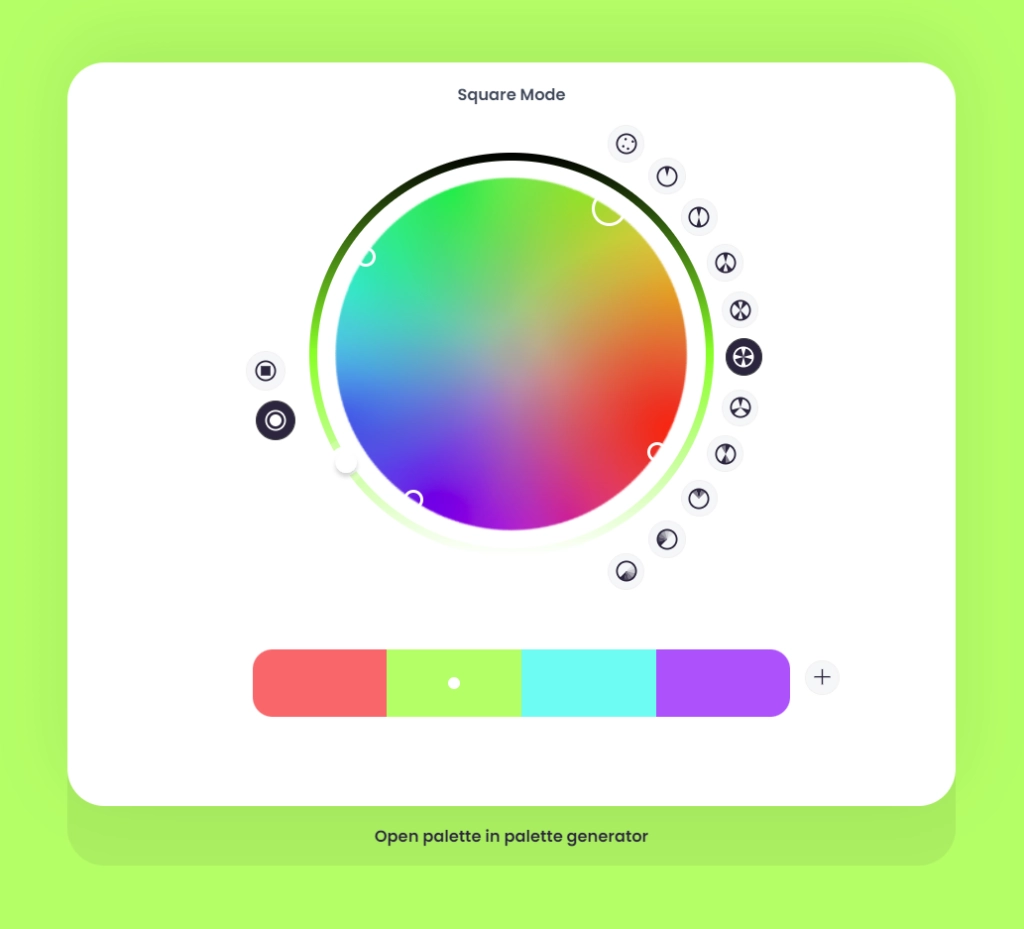

The Triadic model to create your brand colors with
Using the triadic method gives you three colors from different color families. This model of color harmony is great if your brand has more brand attributes and picking close color families won’t share what your brand attributes really are. For example, your brand may have the relaxation of blue, but it also has the softness of pink and maybe has something in common with nature too, and need green color to represent that.
One brand that probably used the triadic method to find its color palette is Dairy Queen. Dairy Queen Color Palette has made with Red, Blue, and Yellowish Orange colors.
Here are three triadic color palette examples:



Last but not least,
Analogous harmony model for brand palettes
Analogous colors are greats for brands that want to use pretty similar and close colors but not from the same color families to give their brand three different colors but not that different. For example, you may want to use aqua color as your main brand color but want two similar colors to use occasionally to create a more aesthetic brand identity.
An analogous color palette contains colors that are next to each other on the color wheel. It has to do with the color family and makes for a nice, laid-back palette. Similar color palettes usually include all cool colors or all warm colors.
For example, the brand mainly uses similar colors such as orange, pink, and purple. These are all warm colors on one side of the color wheel.
However, this similar palette is slightly less comfortable than most due to the sharp contrast added through the use of blacks.
Depending on the look you want to achieve with your brand, if the six colors are similar, you can add additional colors to make your brand stand out even more.
Here are four analogous color palette examples:


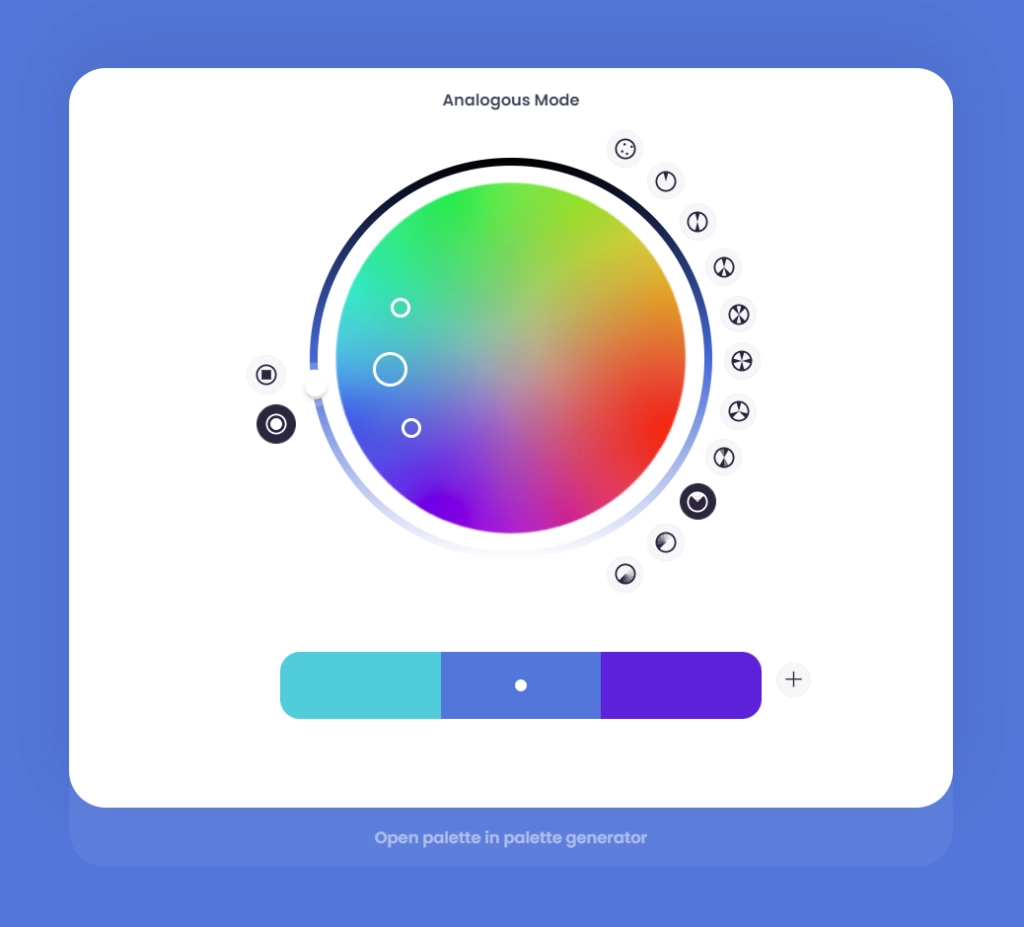
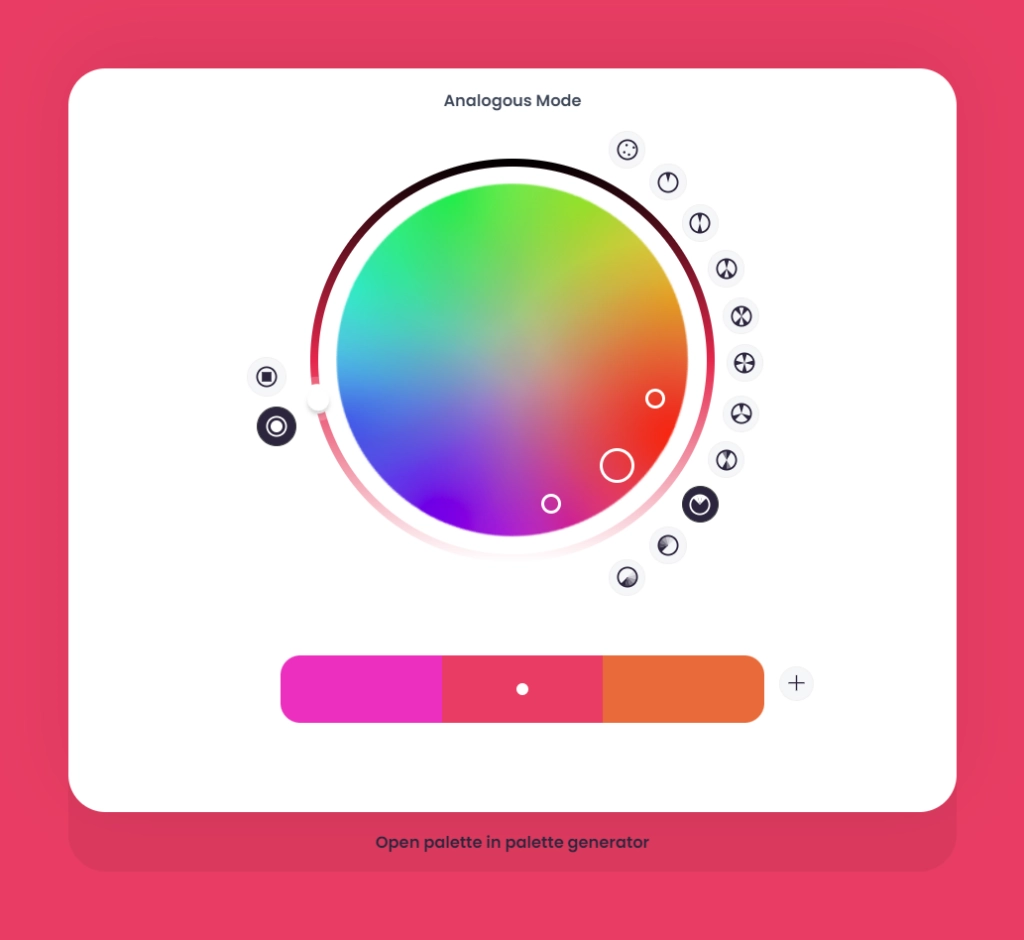
Test Your Color Interactions
Now that you have found your color palette inspiration and created a moldboard of the best color palettes, learned the basics of color psychology and color harmonies it’s time to learn one more trick. In order to create a great brand color palette you need to do many things right, one is making sure that your colors work pretty well together which we call color interaction. If you pick your colors in the right way your colors work the best in any situation and use case, whether it’s a website, illustration, logo, or social media post all colors would fit or seat well together.
There are tools that you can test your colors with in order to make sure your colors work perfectly together, First and best the tool is Color Interaction Checker, the next is the Color Transition tool, and last but not least the Gradient Generator which is similar to color transitions. Okay, let’s check them out quickly and see how these tools help us to make our brand color selection easier.
Color Interaction Checker Tool
With the color interaction checker tool, you can test your color palette in a second! just replace your colors and see the magic happen! Just look how amazing and eye-pleasing these two colors are together.


Color Blender (Transition) Tool
Choose two colors and see how they transition to each other and is the transition is normal and beautiful or not. Just look how amazing these two green colors transition to each other and create a beautiful semi-gradient feeling. This is the power of choosing the right colors.

Let’s see color combinations that go wrong together and will cause problems when you want to use them in your visual brand identity.

Now, let’s change the colors and see the result. See how amazing these magenta and yellow color works together? Here is the link to this beautiful combination: Yellow and Magenta Color Transition

Okay, let’s move from this fantastic tool to the next tool, the Gradient Generator which works similarly with one difference which is that you can’t see the steps because there are hundreds of them side by side.
Gradient Generator
The last tool that helps you to test and validate if your colors work together is the Gradient Generator. In addition to testing your color combination interaction, you can use these c beautiful gradients as your main brand color. Instead of having two solid colors for your brand, you can create a beautiful gradient from those colors and use them as your brand’s primary color.

Here are three beautiful gradients:



Create the Tints, Tones, and Shades of your Brand Colors
Almost every brand color palette has to have tints, tones, and shades to be able to use them in different scenarios. Let’s say you have a primary color, having a tint of that color helps you to use it for background colors, and oriental elements, and having a shade for your brand colors could be great to use for your headings, paragraphs, and more.
Here is how you can create your brand colors tint, tone, and shade.

Simply pick one color and switch between tints, tones, and shade tabs and see the result for each color you want.
Tints are the lighter/brighter version of your colors.
Tones are the colors that gray has been applied to them.
Shades are the darker version of your colors mixed with pure black color.
One of the biggest mistakes inexperienced brand designers make is using a color palette that lacks contrast.
The strong palette contains balanced combinations of light tones, mid-tones, and dark tones whether you are using a monochromatic, pseudo, or complementary color scheme.
Take a look at your brand colors. Do you have one or more dark neutral tones? If not, add black to one of the colors to make it a darker shade or replace one of the existing colors with a darker color.
Is there at least one bright color in the mix? If not, add white to one of the colors to get a lighter shade, or replace one of the existing colors with a lighter one.
Adjust your palette to add contrast to the colors you use, as well as include enough light and dark tones to give you more flexibility in integrating your brand into related products and websites.
Speaking of Contrast, Let’s dig into our next big thing, Contrast of colors.
Check your Colors Contrast
Below, I have shared two examples of good color contrast and bad color contrast. One has passed all the contrast-checking tests and one has failed in three of four. If you want to choose your brand color palettes, you have to make sure that everyone can see and read them. Why create something that most of the world population can’t see and ignore?

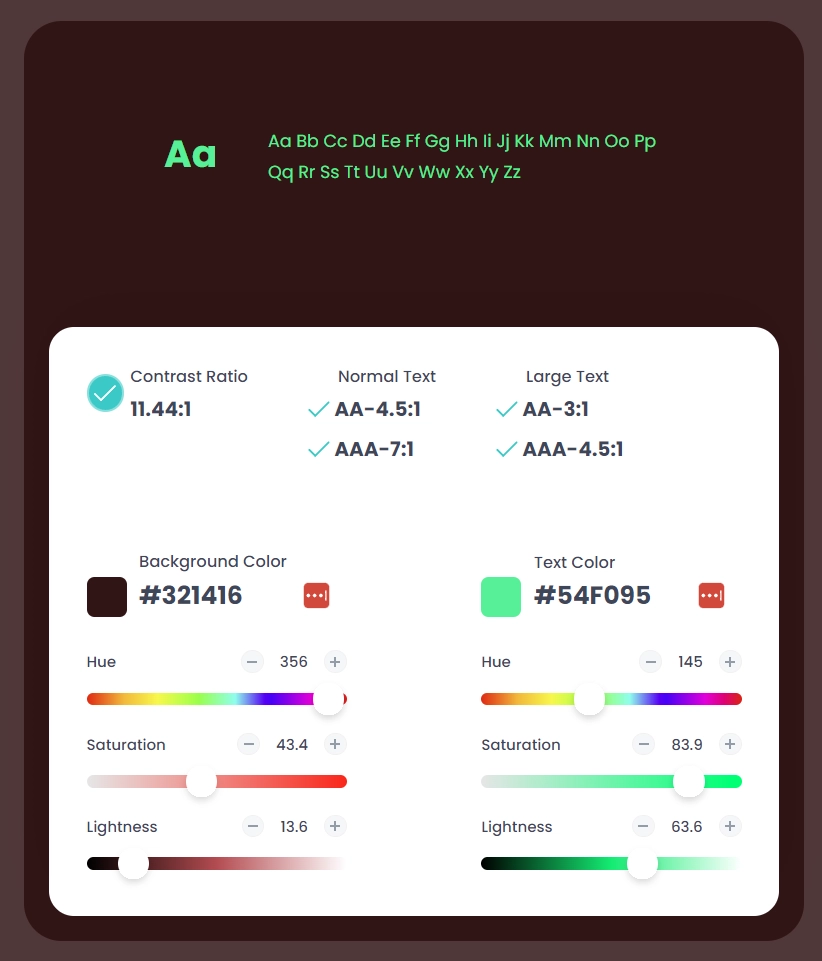
Besides beautifying your brand identity, connecting emotionally with your brand’s target audience, or differentiating your brand from competitors, colors have another important purpose to grab attention! Simply if your colors don’t pass the contrast check test or at least it doesn’t have a safe contrast rate, then you will fail at grabbing people’s attention in your ads, with your CTA’s. Why bother and write a great marketing copy that no one even notices to read?
Here are some examples of color combos with good contrast ratios:
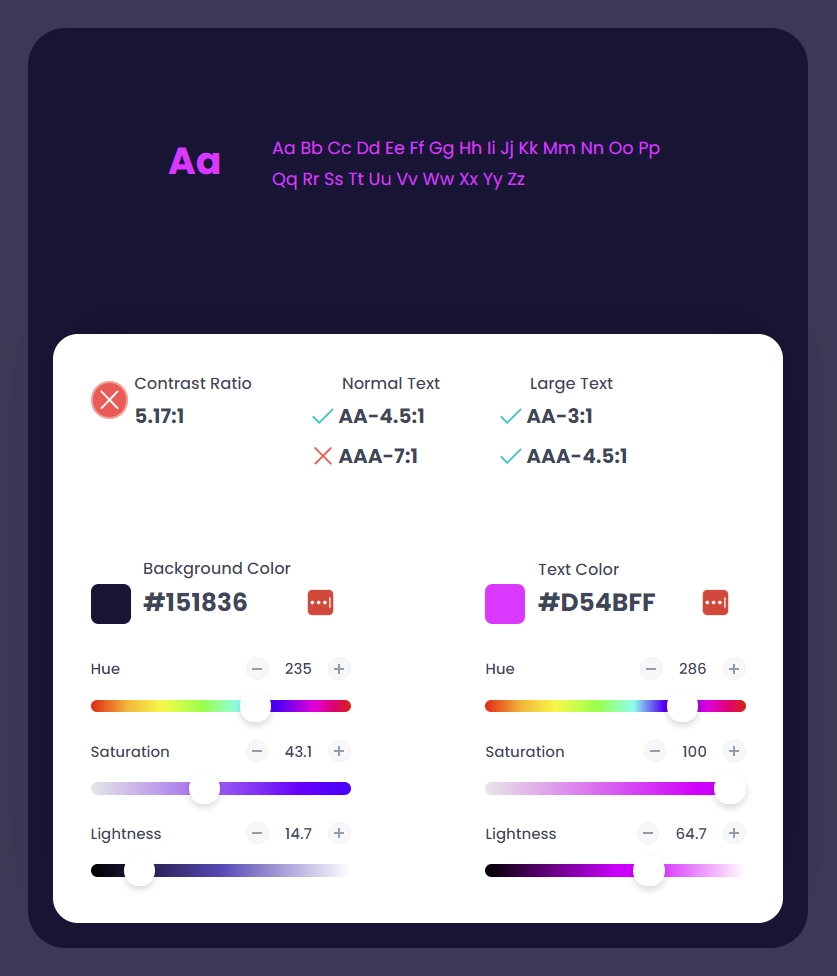

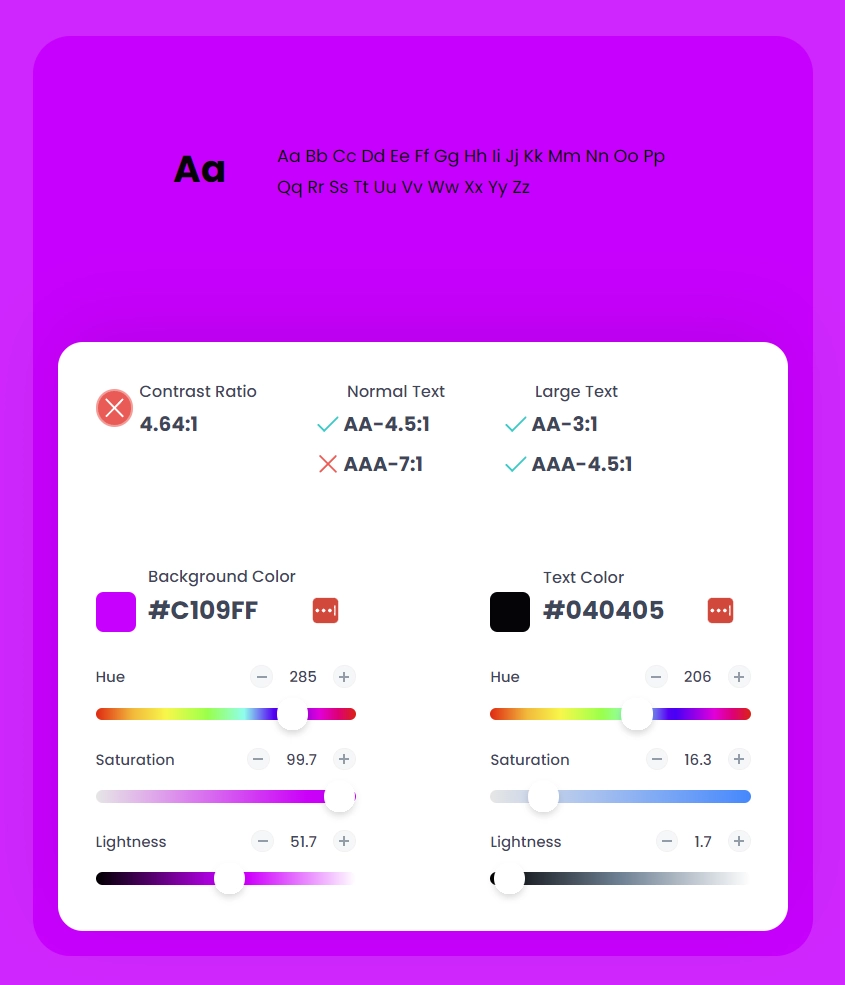
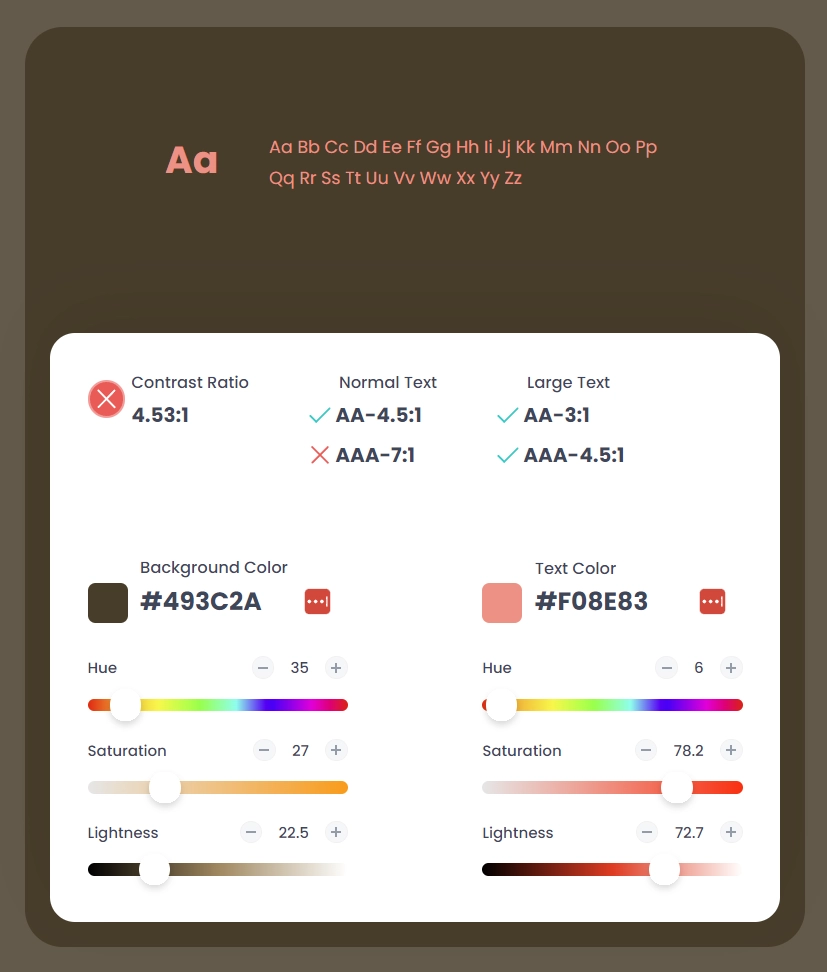
Keep culture in mind when choosing colors
Culture also plays an important role in color associations and preferences. White is associated with joy and innocence in Western countries, but in many Asian countries, for example, it is associated with death. Conduct background research to ensure that your brand colors do not have negative connotations in the countries where your target audience resides.
I have researched and shared many color and culture collections on my Instagram page where you can find and learn which colors are more popular in different countries and cultures.
Keep your brand color codes in one place
Because color is such an important part of your brand, you need to make sure the palette you choose stays the same across desktop, mobile, and print. You just need to know each brand color in its respective color codes like PMS, CMYK, RGB, and HEX.
Brand Colors for Printing
Digital and print media display colors quite differently. When printing branded colors, such as brochures or magazine advertisements, use the PMS or CMYK color types to represent colors.
Brand Colors to Use Digitally
Brand colors are displayed digitally, such as on a desktop computer or mobile device, using RGB (red, green, blue) and HEX (hexadecimal color) color types.
This is how you can choose the perfect palette for your brand.
With all these tools, guides, and tips I have shared, Now you should be able to create stunning brand color palettes if you practice and spent a few hours learning all these basics, meanings, and interactions of colors. Congratulations! Now you have learned everything you need to know to make your brand color palette.
Most importantly, enjoy the process! This is one of the most creative and exciting parts of your business journey.
If you set a color, when people recognize your brand, they tend to remember it as a color. So you can tweak the colors a bit as you go along, but don’t change anything drastically from the original color palette you set up.
Do not change the primary color at all.
Good luck!
Don’t have the time to learn all these tools, theories, and processes? Don’t worry!
Get your perfect brand color palette in less than three days!






